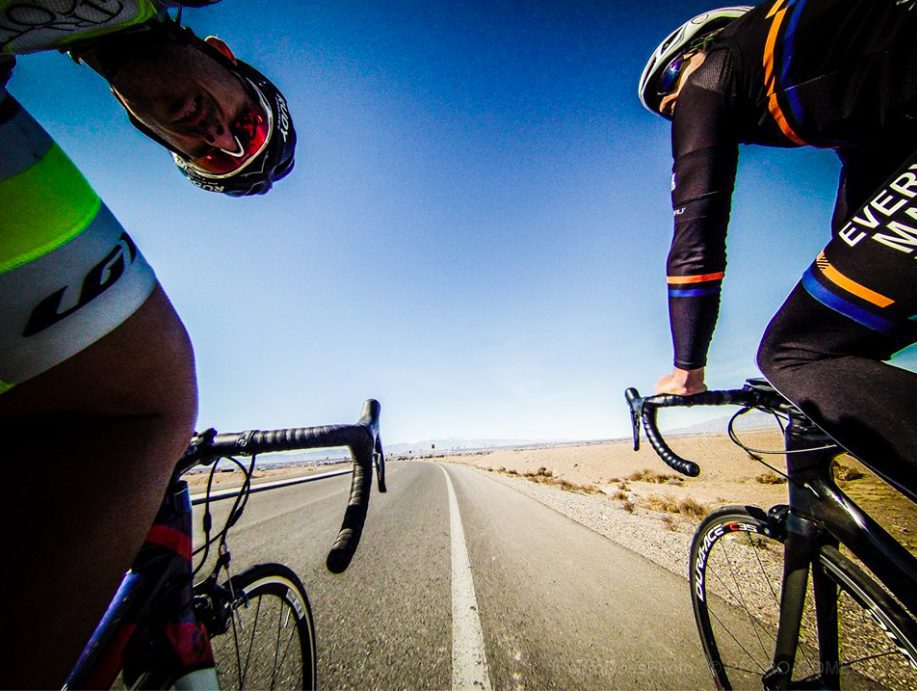A beginner triathlete’s guide to the etiquette and rules of group riding
Some important things to know as your take to the roads this spring.

For the most part, triathletes do not have to worry about drafting or “riding someone’s wheel” when it comes to racing. While there are more and more age-group draft legal triathlons being offered, the majority of races you’ll sign up for enforce a non-drafting rule. However, group riding in training can be beneficial as well as social and fun. It also comes with its share of appropriate etiquette and sets of rules that all riders need to be well versed in before heading out on a group ride. Here are some help educate you on that etiquette and what some of those rules are.
Make sure you know all your hand signals before joining a group ride. There are the obvious left turn and right turn signals but there are also slowing down, stopping, turning around, waving someone to go ahead, and pointing out hazards in the road signals. People behind you can’t see what is happening in front so these are key for the safety of group rides.
You will not be allowed to ride a time trial bike in a group. In other words, your triathlon bike. If your aerobars are built in you will need a road bike, but if your aerobars are removable you can take them off before you go. Aerobars can be dangerous if there is a crash in a group and you are not allowed to ride in them anyway as your hands need to have quick access to your brakes at all times
Fenders. Many groups make it mandatory that your bike be equipped with fenders if heading out in inclement weather together. You will be really glad the person in front of you has some so you need to pay the same courtesy to the people behind you.
No half wheeling. Half wheeling is when you are supposed to be riding side by side with someone but they are constantly riding about half a bike length ahead of you. This makes you feel you need to adjust the pace and ride faster which may impact the rest of the group. It’s also dangerous because you are essentially in the blind spot of the person in front and if they can’t see you move they may run into you.
Keep a steady pace. It’s not appropriate to get to the front and take the pace up a few notches, or on the other hand, if you are struggling to keep the pace, you should drop back to the end and only take a very short turn at the front. Usually on a group ride there are designated spots where it’s known to everyone that the pace is going to pick up for sprints or just because it’s fun.
Always be aware. Group riding can be a great way to be social with like minded people. While chatting, you still need to always be looking forward and have your hands on your hoods with quick access to your brakes. It’s hard to see what is coming ahead of you and you are relying on those in the front to signal but sometimes quick stops or slowdowns happen and you need to be ready. If you hit someone’s back wheel it’s you that will go down and risk taking the rest of the pack down with you. Headphones shouldn’t be used on a group ride, but for safety reasons it’s best to not bring them along for solo rides, too.
How to get off the front and go to the back. If you are riding single file, you generally peel off to the right, away from traffic. You then wait until the last person goes by and take your spot at the back again. If you are riding “2-up” or in other words two lines, one rider goes to the left and the other to the right at the same time, fall to the back, and take your spots as the last riders again. Also, it’s good practice to signal that you are about to go off the front just by pointing to the side in which you are going to fall back.
Group riding is a really great way to improve your fitness and meet people. It’s also fantastic to take advantage of the benefits of being in a pack and go way faster than you normally would on your own. It can be really exciting and fun to ride in a group and keeping all these tips in mind it will also be safe for you and the rest of the group.

